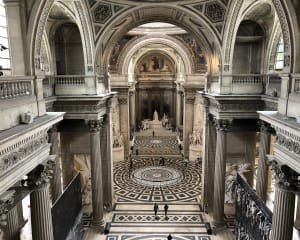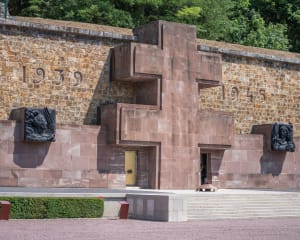Women who fought
- Inspiration
- Themed guides
- Celebrating women in Paris Region
- Women who fought
In Paris Region, you can learn about the stories of those committed fighters, who engaged in struggles that sometimes cost them their lives. A defender of freedom and lover of France, Josephine Baker enters the Pantheon on 30 November 2021.
A grateful homeland
Though the front of the Panthéon bears the inscription “Aux Grands Hommes la patrie Reconnaissante” (“A grateful nation honours its great men”), we should not forget that the building also houses the tombs of some famous women.
A singer, dancer, actress and the first black woman to enter the Pantheon, Josephine Baker was an American by birth but French at heart, and fought her whole life in defence of freedom. During World War II, she made the decision to spy for the Free France movement, taking great risks to convey secret messages hidden in her sheet music. When she returned to the United States after the war, she became involved in the civil rights movement with Martin Luther King.
In addition to scientist Marie Curie, three other women are buried in the Pantheon on their own merits. Geneviève de Gaulle-Anthonioz and Germaine Tillion earned their places for their active participation in the Resistance during World War II, and for their subsequent political commitment.
The fourth, and perhaps the most famous, is Simone Veil. An Auschwitz survivor, she fought tirelessly throughout her life for human rights and more particularly to further women’s rights. The vote to decriminalise abortion in 1974 was her most notable triumph.

A grateful homeland
In the western suburbs of Paris, on a hill called Mont Valérien, sits the Mémorial de la France combattante (literally the “Memorial of Fighting France”).
This imposing monument celebrating the heroic deeds of resistance fighters in the Second World War holds in its crypt the remains of Berty Albrecht and Renée Lévy, assassinated in 1943 as they fought for the liberation of France.

The square of memory
In 1871, Napoleon III’s army was beaten by the Prussian troops. Besieged and starving, the people of Paris rose up against the emperor, who they held responsible for the defeat.
Over the course of a popular uprising lasting several weeks, dubbed the Paris Commune, the working class strove to further its rights. The revolt was, however, brutally quashed in what came to be known as “Bloody Week”.
One of the most iconic figures of that troubled period was Louise Michel. A primary school teacher by profession, she played an active role in the conflict.
She was arrested and deported to New Caledonia before being pardoned and returning to France to continue her struggle for a better life for the proletariat.
A small park at the foot of Montmartre bears the name Square Louise Michel in tribute to this fearless campaigner.

Our selection
- Copyright image: Ministère de la Culture / Médiathèque du Patrimoine, Dist. RMN / Studio Harcourt



